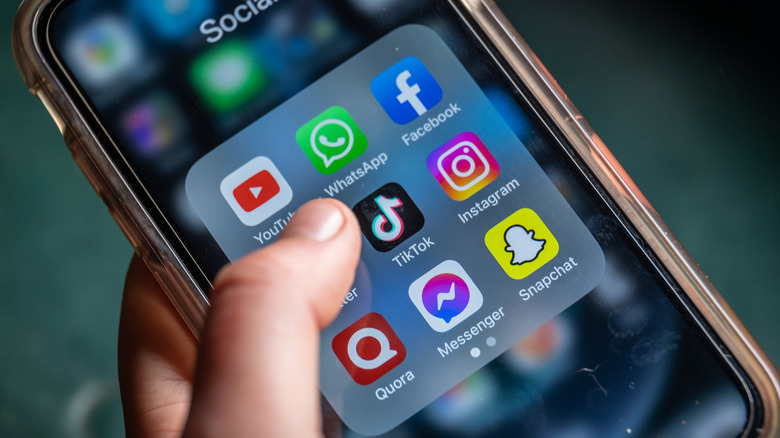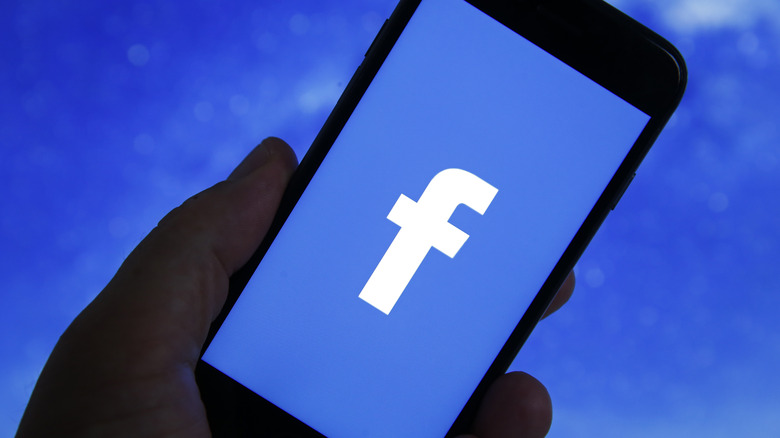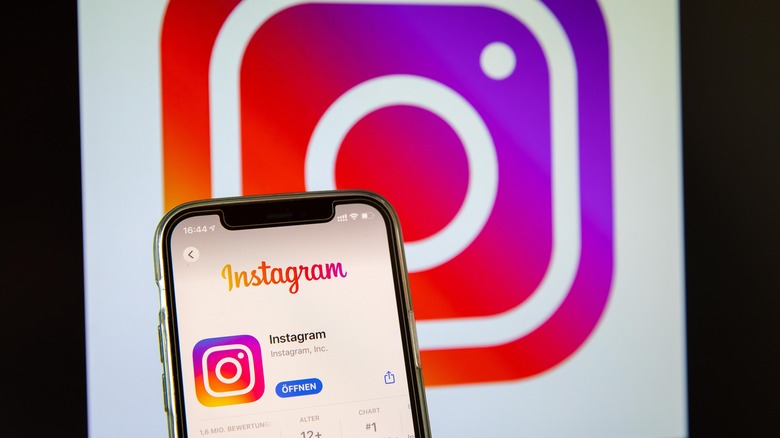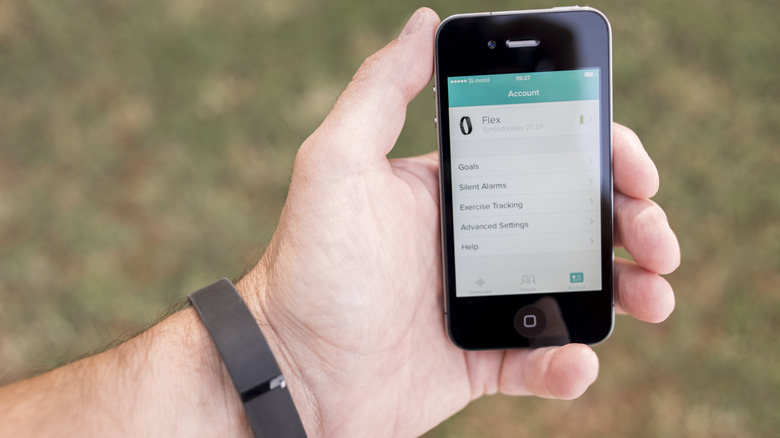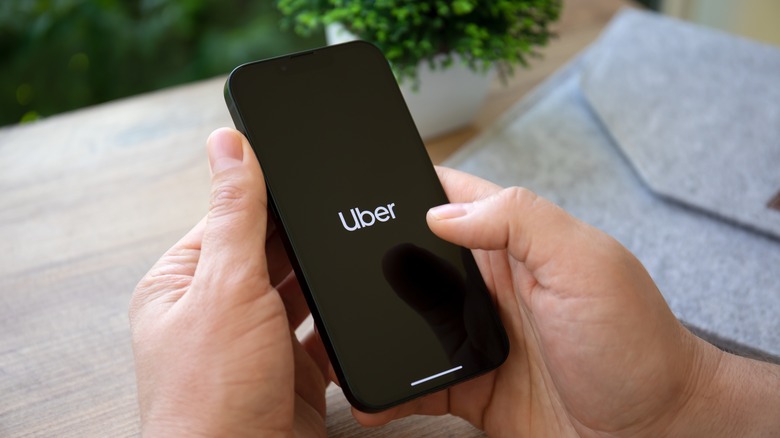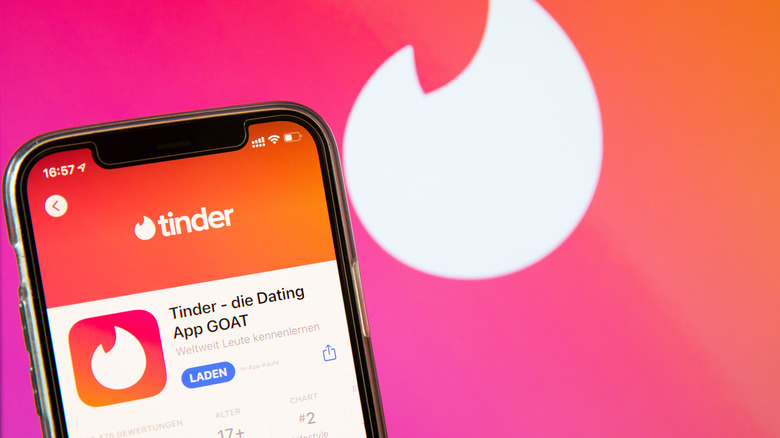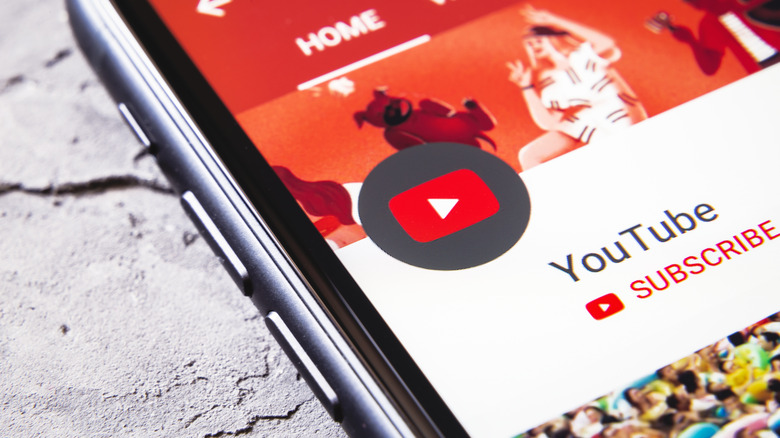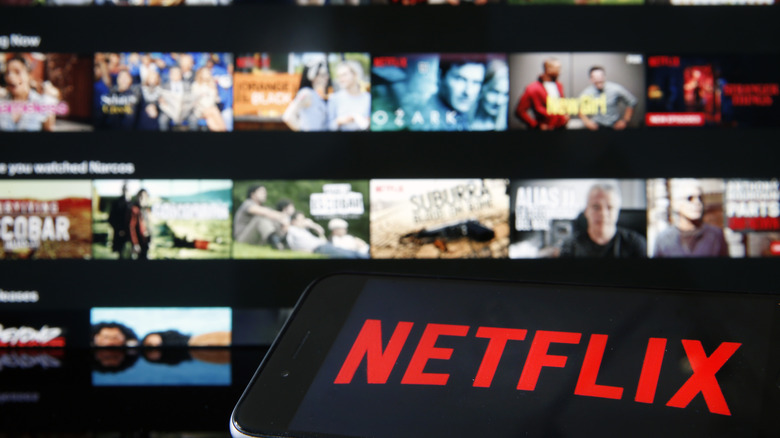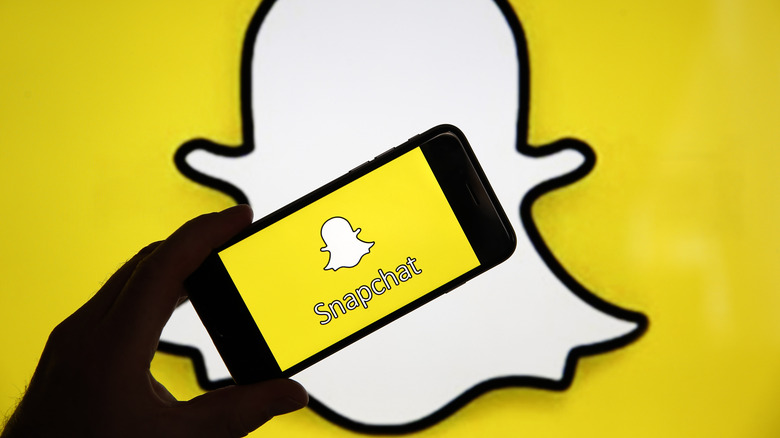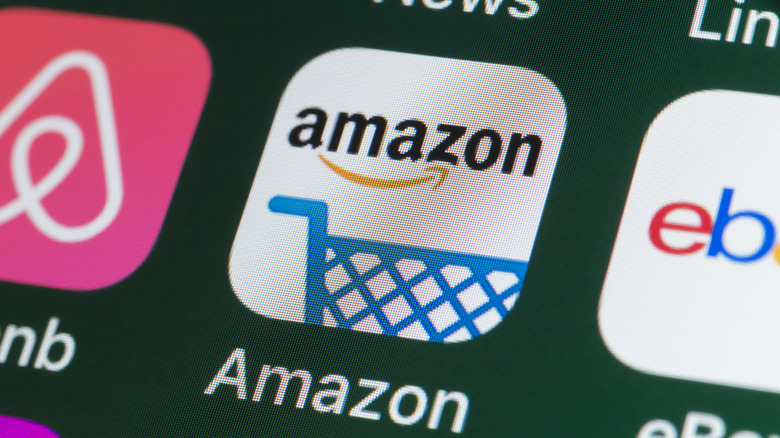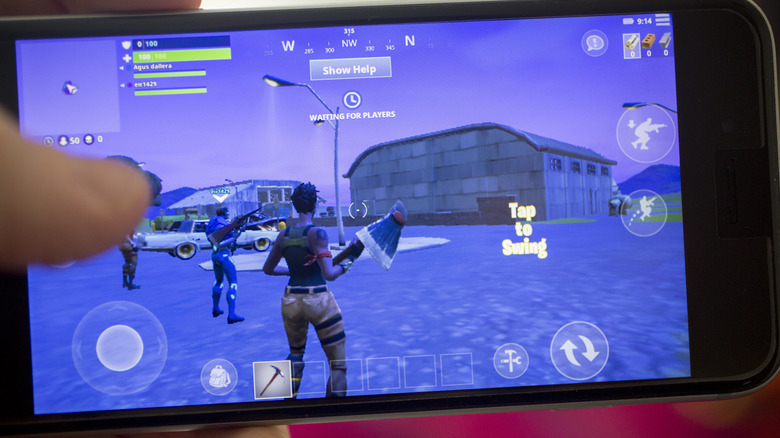These 10 Popular iPhone Apps Are Quickly Draining Your Phone's Battery
Over the last two decades, mobile phones have evolved from devices that could be used to make calls and send SMS messages to portable computers that can carry out a wide array of tasks. Smartphones can search the web, play intense games, stream videos, access social media sites, and even record high-resolution footage. But all of those functions require a lot of power, and combined with the slow advancement of battery technology, users face a constant battle to keep their phones fully charged.
Anyone who has owned an iPhone will no doubt have experienced the feeling of knowing that their battery is about to drain completely — leaving them with no way of checking their emails or entertaining themselves on the commute home. It's an all too common problem for iPhone users, especially those with an entire suite of additional apps installed.
However, that doesn't mean there's nothing you can do about preserving your battery life. These are some of the most demanding and power-hungry apps available for the iPhone — uninstalling a few of them might just mean your phone can make it through the day.
Facebook boasts billions of users, and the vast majority of them access it via a mobile phone rather than a web browser. That has made the Facebook app one of the most popular on iPhone and Android, making it incredibly likely that you'd find it installed on any device you come across. Yet, Facebook is also one of the biggest drains on phone batteries for users globally.
A large part of it is the fact that Facebook is used so frequently compared to many other apps. Users spend around half an hour on Facebook every day on average, scrolling through their feeds and consuming content. The app can even be a significant power draw when running in the background as it still uses the CPU to check for notifications and refresh the feed even when not open — as well as a host of other permissions such as the ability to use the microphone and receive location information. Facebook also typically contains lots of demanding content, such as images and videos, which can also be a major resource hog.
According to a former Facebook employee (via Macworld), the social media app may even purposely drain phone batteries in a process known as negative testing. This controversial practice allows developers to determine how the app responds to the battery being drained faster than normal.
Instagram, owned by Facebook's parent company Meta, is well known to be one of the worst offenders when it comes to draining phone batteries. Users regularly complain about the app online, pointing out how quickly it can cause a device to run out of power. In fact, experts suggest that simply removing Instagram from a phone could help to save up to 25% of the battery.
Among social media apps, only Facebook is a worse offender than Instagram. That's largely because the entire Instagram experience is built around consuming the most amount of content, and the app is focused exclusively on images and video rather than text. Instagram also pre-loads content to allow users to quickly scroll through a feed without having to wait for it to load. And it utilizes location services to deliver posts and advertisements tailored to each user's location.
Some options are available for those who want to keep Instagram on their phone but reduce battery usage. Users can fiddle with settings to turn off notifications and use less cellular data, reducing the amount of power the app uses. This should make the app significantly more efficient and stop it from causing devices to become dead quite so quickly.
Fitbit
Although its use isn't anywhere near as widespread as certain other apps, the Fitbit application on iPhone has developed a reputation for quickly draining batteries. There are hundreds of complaints from Fitbit owners on the company's official forums, noting how the app is capable of using up massive amounts of power even when running in the background. Some reports even suggest that it is responsible for taking phone batteries to half of their capacity, leaving just 50% for other apps and processes.
The reason that Fitbit is so power-hungry lies in the way it works. According to pCloud, the app uses 14 of the 16 background features the iPhone supports. This includes location, the camera, and a constant Wi-Fi connection. With the app able to track exercise even when not open and using demanding processes such as GPS to do so, it can be a major resource drain. Fitbit also can send notifications and has a raft of community features that allow users to interact with each other.
Of course, one of Fitbit's most important features is its ability to connect to a smartwatch or fitness tracker. This requires a Bluetooth connection and allows the app to have real-time updates for data such as steps and heart rate. This makes the Fitbit app even more demanding in terms of battery usage.
Uber
Uber has become one of the most popular apps in recent years. The ride-hailing service effectively allows users to organize travel without having to rely on traditional taxi services. Across its range, which also includes the food delivery service Uber Eats, Uber has more than 130 million monthly active users across 70 countries around the world. Despite being so popular, Uber has failed to find a way to make its app particularly efficient. It has been named among the most demanding apps for phone batteries.
According to pCloud, this is because of the large number of features that Uber needs access to in order to work. For example, it can access phone files such as photos and other media, see call information, view contacts, and make use of location services. Uber also requires a lot of storage space, taking up valuable memory and slowing down the phone by using more of its resources.
By far, the biggest factor Uber is causing phone batteries to deplete dramatically is its use of location features. To function, Uber needs to know where users are so it can send drivers to them and calculate fares based on its supply and demand model. But GPS and other location processes are power intensive and can quickly use a lot of energy. Meanwhile, the fact that users will likely be looking at the screen frequently to check on the status of their driver also drains the power.
Tinder
Since its launch in 2012, Tinder has become one of the world's most successful and popular dating apps. Regularly used by millions globally, Tinder has changed how people find potential partners and how relationships work in the modern age. Users are shown potential matches and can swipe right or left to determine whether they want to connect with that person. If both parties swipe right, it is listed as a match, and the two individuals can then message each other.
Tinder's intensive battery usage shouldn't be a huge surprise because the dating app is highly dependent on location features to work. The app has access to a wide array of services even when run in the background and needs access to a person's location to function as intended. That's because Tinder works by finding potential matches in your local area, meaning it constantly checks your location and uses that information to refresh the users it displays.
The app also makes use of a lot of photographs and is built around users constantly swiping through new profiles and using the app for extended periods. To make matters worse, Tinder doesn't have an official dark mode. This means that it consumes more power when being used as more light is needed to illuminate the bright and white user interface that the app uses.
YouTube
YouTube was once a video-sharing site but has grown to become one of the world's biggest social media platforms and content delivery services. As well as offering a diverse amount of user-created videos, YouTube has become one of the go-to destinations for those looking to listen to music and rent or buy movies and TV series. It is hugely popular with people of all ages, and billions of hours of video are watched every week.
Unlike many other high-consumption apps, YouTube drains your phone's power in very different ways. It doesn't have a heavy emphasis on using location features and won't use much when running in the background. Instead, YouTube requires plenty of power to download and stream video, often in high definition, which puts a lot of strain on a device's internet connection. This video has to be displayed on the screen, forcing the display to stay on and the speakers to play sound. All these processes need a lot of power to work, more so when used for any significant amount of time.
Those using YouTube regularly can do some things to make the app slightly less of a drain on a phone's battery. The app has a battery optimization option, while users can also lower screen brightness and video quality to preserve power.
Netflix
Out of all the apps available for iPhones, video streaming services are typically some of the most power-hungry. After all, they often utilize the screen to display video, speakers to play sound, and a constant internet connection to download or stream files to the device. All three factors are greedy in terms of power and will likely lead to batteries being drained far quicker than they would using other apps.
Of course, there's also the fact that users typically watch quite a lot of Netflix content at one time. Very few people will stay on Netflix for just a small amount of time, and many binge-watch entire series in one sitting. One expert told She Finds: "Whilst this will be quite different from user to user, my personal experience has shown that Netflix puts a lot of strain on my mobile device's battery. The main reason is that a Netflix session usually doesn't end after 20 mins, and we tend to binge-watch multiple episodes of a show."
Netflix also runs in the background and has been known to use a significant amount of power even when a phone is left in standby mode with the screen turned off. This is because it can send notifications to users when new content is launched or if it has recommendations based on what a person has previously watched.
Snapchat
Snapchat has established a reputation as one of the most power-hungry apps available on iPhone. First launched in 2011, Snapchat is an instant messaging app with a heavy focus on sending time-limited photographs and short videos — known as Snaps within the app's ecosystem. It has amassed hundreds of millions of users and typically sees more than four billion messages being sent between its users every single day.
It is not just the app's popularity and the fact that users tend to spend a lot of time on it that make it such a big drain on batteries. The way Snapchat is built and works ensures that it will consume a lot of power, even when it is not directly being used. Some estimates suggest that the social media app could be responsible for draining as much as 45% of a phone's battery.
Snapchat largely revolves around people sending and watching videos or images as well as using processor-heavy filters and augmented reality technology. The app also tracks users' locations and provides that information to followers, giving real-time information about where you are. Many of these elements can be turned off to make Snapchat a bit less demanding, although this also takes away some of the service's most popular features.
Amazon
When you think of the most draining apps for an iPhone battery, Amazon is unlikely to be top of the list. After all, it isn't like it is the kind of app that is constantly displaying videos, images, or music and doesn't generally involve anything that would need intensive processes, such as location or camera features. Yet, pCloud rates it as one of the worst offenders when it comes to using up excessive amounts of power.
The major issue with the Amazon app appears to be the fact that it regularly refreshes as it sends and receives information from Amazon's servers. This is done to provide users with the latest deals, many of which are pushed out as notifications. The result is that the Amazon app is constantly being run in the background, making it a constant source of power consumption. In fact, pCloud rates it higher than many messaging and social media sites because it can access 11 different features while running in the background.
In the case of the Amazon app, users may well be best served by uninstalling it and instead choosing to shop online directly on the Amazon site via a browser. This will not only use less of your battery but save space on the phone by taking up less memory.
Fortnite
As smartphones have become more powerful, the types of games available have become far more advanced. While mobile titles used to be simple releases, it is now possible to play many of the same games on an iPhone that you would on a console or PC. Yet, these AAA games require a lot of processing power and can quickly eat up battery life because they not only output video and sound but also require constant input via the touch screen by players to control the gameplay.
One of the worst offenders is also one of the most popular games. "Fortnite" is a battle royale game where players compete against up to 100 gamers, with the ultimate aim being to survive and be the last player standing. It features a large map, plenty of weapons, and hundreds of customizable skins. Having to load all of this data and present it to the player demands an awful lot of energy. It's easily among the worst games for your mobile phone battery.
"Fortnite" is arguably a bigger offender than many other games, though, because it is a multiplayer experience. Players need a constant internet connection as they are competing against real human users from around the world. This makes "Fortnite" even more power-hungry and means that you'll likely only be able to play for a few hours before having to charge your device.
